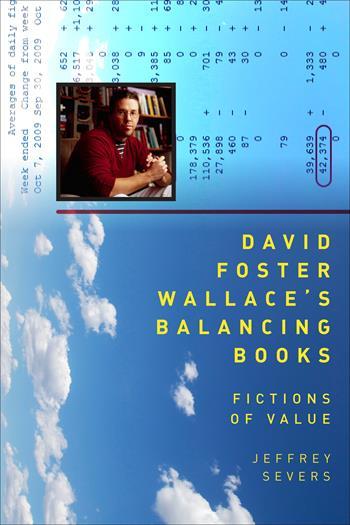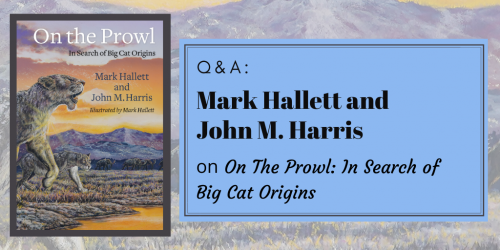An Interview with Jeffrey Severs, Author of "David Foster Wallace's Balancing Books"
“Immersive reading of literary fiction, especially in Wallace’s ragged, tangential, footnoted forms, reminds us that the minds of others are wonderfully textured, unpredictable places—and forgetting that underlies nearly every ethical problem we encounter, as Wallace demonstrates again and again.”—Jeffrey Severs
The following is an interview with Jeffrey Severs, author of David Foster Wallace’s Balancing Books: Fictions of Value:
Question: How do you account for the continuing popularity of David Foster Wallace in 2017, especially his novel, Infinite Jest?
Jeff Severs: Infinite Jest has certainly become the book on which many young intellectuals test their reading mettle, much like Gravity’s Rainbow was for me when I was in college in the mid-1990s. Many of my most ambitious undergraduates often come to my courses already in love with Infinite Jest or some of his essays and wanting to read the books that inspired Wallace. Certain parts of Infinite Jest have become quite apt descriptions of how we entertain ourselves and communicate in the 21st century: Wallace’s “InterLace” network of film-cartridge distribution predicted the rise of Netflix and supposedly total “choice” over TV, and his deadly Entertainment is an exaggeration that exposes how unhealthy our everyday media habits can be—think of what we’re saying by making the bodily metaphor of “binge-watching” commonplace. Whenever I feel weird about where I’m looking (camera or screen?) during a Skype call, I think of Infinite Jest’s hilarious account of the demise of video-telephony. He understood how machines would continue to make being in touch easier but never resolve fundamental anxieties about communication, like “Does this person truly understand me?” and “Am I just narcissistically talking to myself here in the guise of a conversation?”
Q. Wallace has experienced an upsurge in critical interest since his 2008 suicide. How does his untimely death figure in the culture’s reception of him and your own appreciation of him?
JS: If you’ve ever been through depression or addiction yourself or been close to someone with those struggles, Wallace’s work offers illuminating descriptions of how those states can frame every thought and comprise the air of every breath. Those who love Wallace’s work and find wisdom in it tend to recognize that his intimate descriptions of the mind consuming itself are absolutely heroic. Immersive reading of literary fiction, especially in Wallace’s ragged, tangential, footnoted forms, reminds us that the minds of others are wonderfully textured, unpredictable places—and forgetting that underlies nearly every ethical problem we encounter, as Wallace demonstrates again and again.
It’s very difficult to say anything about Wallace’s suicide in relation to his writing that seems simultaneously true, right, respectful, and attentive to his complex understanding of authorship, autobiography, fiction, and the ability of language to represent feeling. Beyond being sad that we will see no more books from him, I prefer to think of writing and thinking about him after his death as an opportunity to be the kind of active, involved reader he was obsessed with cultivating—a way of helping make his work into a nuanced, communal dialogue that doesn’t begin and end with him. That’s what he seemed to want most.
Q. What drove you to focus on the themes of value and balance in your book?
JS: My title, Balancing Books, reflects the focus on the accountant figure that dominates The Pale King. In the book, I discuss why Wallace spent so many years dwelling on accounting and using the tax system to explore American relationships to neoliberal governance, civic institutions, and money itself. Some of these themes are usually taken to be “late Wallace” ideas, but I show their importance in the earliest writing. But the book actually began, rather inauspiciously, with curiosity about why Wallace wrote so often—from The Broom of the System to The Pale King—about feet and shoes. Broom has one of the funnier first sentences in literary history: “Most really pretty girls have pretty ugly feet, and so does Mindy Metalman, Lenore notices, all of a sudden.” I argue that all these feet, shoes, and leg images (including those who cannot stand, like the wheelchair assassins in Infinite Jest) have a connection to one of Wallace’s most serious philosophical subjects: the axiomatic, what we stand on, what values are foundational to our lives and help us avoid cheap nihilism. That is the path chosen by Chris Fogle in The Pale King, who, before he becomes a tax accountant, builds what he calls a “nihilistic ritual” of college drinking around a giant, rotating foot, a podiatrist’s ad. Through all this attention to where and how characters stand and balance, Wallace wrote axiological fiction—axiology being the philosophy of value judgments and, as the name suggests, related to the axiomatic (from the Greek axios, for “worthy”).
The fact that our feet strike us as ugly, funny, or just unremarkable has a way of disarming our critical faculties, and that was why Wallace almost always worked with the image and used it as a gateway to talking about the abject, the dirty, and the repressed. As he says in This is Water, we need to attune ourselves to “the most obvious, ubiquitous, important realities [that] are often the . . . hardest to see and talk about.” He was interested in the unacknowledged ground beneath our feet, including definitions of taken-for-granted things like value, work, and even the fact that I exist and others exist.
Q. How does your book diverge from other critical studies of Wallace?
JS: My approach is largely materialist. While I do have many things to say about solipsism, irony, Wittgenstein, Kierkegaard, and issues of language philosophy and spirituality that have framed much of Wallace’s critical reception, I underscore his interest in economy and exchange, images of which led him to satiric portraits of NAFTA, financialization, health insurance, and monetary policy. I find him writing often about currency and the communal connections it makes possible and curtails. There is a lot in the book for any reader curious about what sorts of (surreal) imagining prove most effectively anti-neoliberal. Ultimately my book is for readers who want to understand Wallace in historical context and get to the real depths of his cultural critiques. It’s a book for readers who know that the Wallace buzzwords—sincerity, irony, Alcoholics Anonymous, tennis, lobsters—are just a small part of what makes him so important to our times.






1 Response